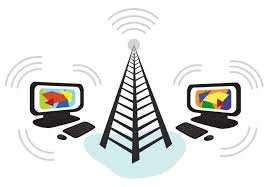In the 21st-century business landscape, data is the new oil, and the ability to extract, analyze, and act upon it is the engine of competitive advantage. Enter the Internet of Things (IoT), a transformative technological paradigm that is fundamentally reshaping how companies operate, compete, and deliver value. At its core, the Internet of Things (IoT) refers to the vast network of physical objects—”things”—embedded with sensors, software, and other technologies for the purpose of connecting and exchanging data with other devices and systems over the internet. This goes far beyond smartphones and computers; it encompasses everything from warehouse forklifts and delivery trucks to soil moisture sensors on farms and HVAC systems in office buildings. For forward-thinking businesses, the strategic implementation of the Internet of Things (IoT) is no longer a futuristic concept but a present-day imperative, offering a multitude of benefits that drive efficiency, innovation, and growth. This article delves into the top advantages that businesses can harness by integrating IoT into their operational DNA.
1. Enhanced Operational Efficiency and Productivity
Perhaps the most immediate and tangible benefit of IoT is the dramatic increase in operational efficiency. By providing real-time visibility into every facet of operations, IoT systems eliminate guesswork and automate processes, leading to significant productivity gains.
Asset Tracking and Management: Businesses can equip machinery, tools, and vehicles with IoT sensors to track their location, status, and usage in real-time. A manufacturing plant can know the exact location of every component on the assembly line. A logistics company can monitor its entire fleet of trucks, optimizing routes to reduce fuel consumption and ensure timely deliveries. This reduces time wasted searching for assets and prevents loss or theft.
Predictive Maintenance: This is a game-changer for industries reliant on heavy machinery. Instead of following a rigid, calendar-based maintenance schedule (which can lead to unnecessary servicing or, worse, unexpected breakdowns), IoT enables predictive maintenance. Sensors on equipment continuously monitor conditions like temperature, vibration, pressure, and noise levels. Using machine learning algorithms, the system can analyze this data to predict a potential failure before it happens. This allows maintenance to be scheduled just in time, minimizing costly unplanned downtime, extending the lifespan of assets, and reducing maintenance costs. For example, an IoT sensor on a conveyor belt motor can detect an anomalous vibration pattern, alerting technicians to replace a bearing days before it would have failed and halted the entire production line.
2. Revolutionized Supply Chain and Logistics Management
The Internet of Things (IoT) brings unprecedented transparency, control, and agility to supply chains, transforming them from linear, sequential processes into dynamic, interconnected ecosystems.
Real-Time Visibility: IoT sensors on pallets, containers, and individual products allow businesses to track goods from the point of manufacture to the final destination. Managers can see exactly where a shipment is, monitor environmental conditions like temperature and humidity (critical for pharmaceuticals and perishable foods), and receive instant alerts if a package is tampered with or deviates from its planned route.
Warehouse Automation: Smart warehouses are becoming the norm, powered by IoT. RFID tags and sensors automate inventory management, providing accurate, real-time stock levels without manual counts. Autonomous guided vehicles (AGVs) and drones can move goods around massive fulfillment centers, working alongside humans to pick, sort, and pack orders with incredible speed and accuracy. This reduces errors, lowers labor costs, and dramatically speeds up order fulfillment.
Enhanced Fleet Management: For logistics companies, IoT fleet solutions combine GPS tracking with onboard diagnostics. This provides data on vehicle location, speed, fuel consumption, idling time, and driver behavior. Companies can use this information to optimize routes for efficiency, promote safer driving habits, reduce fuel costs, and provide customers with accurate estimated times of arrival.
3. Improved Safety and Risk Mitigation
IoT technologies create safer work environments and provide powerful tools for managing risk, protecting both employees and physical assets.
Workplace Safety: In hazardous environments like construction sites, factories, and mines, IoT wearables can save lives. Workers can wear smart helmets or vests that monitor vital signs, detect falls, and alert supervisors to emergencies. Sensors can be placed in confined spaces to monitor for toxic gas leaks or oxygen deficiency. Machinery can be equipped with proximity sensors that automatically shut down if a worker gets too close to a dangerous area.
Physical Security: Smart security systems go far beyond traditional cameras. Businesses can deploy a network of IoT-connected devices, including smart locks, motion sensors, and access control systems that use biometrics or smartphones for entry. These systems can be monitored and controlled remotely, sending instant alerts to security personnel in case of a breach. This deters theft and vandalism and protects sensitive areas.
Environmental Monitoring: For businesses in agriculture, manufacturing, or energy, IoT sensors can monitor environmental factors and ensure compliance with regulations. They can detect leaks of hazardous materials, monitor air and water quality, and track emissions, allowing for immediate response to potential disasters and avoiding hefty regulatory fines.
4. Deeper Customer Insights and Personalization
The Internet of Things (IoT) is not limited to internal operations; it is a powerful tool for understanding customers on an unprecedented level and creating hyper-personalized experiences.
Product Usage Data: Connected products provide a continuous stream of data on how customers actually use them. A car manufacturer can learn which features are used most frequently. A kitchen appliance company can understand usage patterns to inform future design. This data is invaluable for product development, allowing companies to innovate based on real-world behavior rather than assumptions.
Personalized Engagement and Services: IoT enables new, service-based business models often referred to as “Products-as-a-Service.” For instance, a manufacturer of industrial printers can use IoT data to know exactly when a customer is running low on ink and automatically ship a refill, creating a seamless subscription service. A fitness equipment company can use data from a connected treadmill to offer personalized workout recommendations and virtual coaching services, transforming a one-time product sale into an ongoing revenue relationship.
Enhanced In-Person Experiences: In the retail sector, IoT is used to create smarter stores. Beacons can send personalized offers and discounts to a customer’s smartphone as they walk near a product. Smart shelves can detect when inventory is low and alert staff to restock. This blends the convenience of online personalization with the physical shopping experience, increasing customer satisfaction and sales.
5. The Birth of New Business Models and Revenue Streams
Ultimately, the greatest strategic benefit of IoT is its power to fundamentally redefine a company’s value proposition and open up entirely new sources of revenue.
Outcome-Based Models (XaaS – Everything as a Service): IoT data allows companies to shift from selling physical products to selling the outcomes those products deliver. Jet engine manufacturers like Rolls-Royce no longer just sell engines; they sell “Power-by-the-Hour,” a service where airlines pay for thrust based on engine usage, with Rolls-Royce guaranteeing uptime and handling all maintenance via IoT data. This creates predictable, recurring revenue streams and deepens customer relationships.
Data Monetization: The data generated by IoT networks can itself become a valuable asset. Anonymized and aggregated, this data can be sold to third parties. For example, a company that installs smart city sensors to monitor traffic flow could sell that data to municipal planning departments or navigation app companies like Waze or Google Maps.
New Service Offerings: IoT creates opportunities to build services on top of existing products. An agricultural equipment company can combine data from its connected tractors with satellite imagery and soil sensors to offer farmers a full-fledged “precision farming” subscription service, advising them on exactly when to plant, water, and harvest each section of their field to maximize yield.
Conclusion: Integrating IoT for a Smarter Future
The benefits of the Internet of Things (IoT) are profound and interconnected. The data from enhanced operations improves the supply chain. Insights from the supply chain inform customer personalization. And all these elements combine to enable innovative business models. However, successfully capturing this value requires more than just installing sensors. It demands a strategic vision, a willingness to transform business processes, and a robust investment in data analytics capabilities and cybersecurity to protect the vast amounts of data generated.
Businesses that view IoT not as a simple technology upgrade but as a core strategic imperative will be the ones to thrive in the data-driven economy. They will operate with unparalleled efficiency, create deeply loyal customers, and discover lucrative new markets. The Internet of Things (IoT) is the bridge between the physical and digital worlds, and crossing it is essential for any business aiming to lead in the years to come.








Comments 1